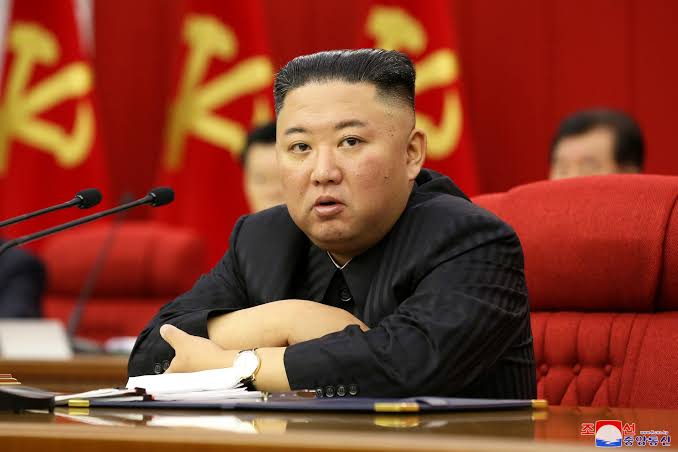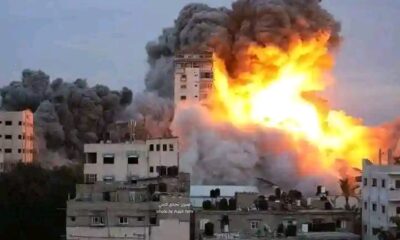Global Issues
North Korea and Its Intercontinental Ballistic Missile Test: 5 key facts about the country -By Olusoji AJAO
In 1995, North Korea committed to abide by the Nuclear Non-Proliferation Treaty (NPT) by signing the Treaty in 1995. However, by 2003, North Korea withdrew from the NPT, and subsequently reignited its research on development of Nuclear capabilities.

North Korea, an aspiring nuclear power, takes advantage of the ongoing Russo-Ukrainian war to launch its largest intercontinental ballistic missile (ICBM) in a test on Thursday, 24 March, 2022. This was the first time the country tested an ICBM since 2017.
Here are 5 key facts about the country for understanding the implications of the test.
- North Korea was Created in 1948
The Korean Peninsula was a colonial territory of Japan, however after the defeat of Japan in 1945 (Word War II) the Peninsula was divided into two
spheres of influence along 38 degrees north latitude.
It was founded in 1948, after the United States (US) and the defunct Soviet Union divided the Peninsula into North and South Korea. North Korea was administered by Communist Soviet Union and South Korea by the Capitalist US.
North Korea is officially known as the Democratic People’s Republic of Korea, or DPRK. Its has a total population of about 25 million people as of 2021
- Korean War
In 1950 both countries engaged in war after North Korea (backed by the Soviet Union and China) invaded South Korea. With the support of the US, South Korea resisted and effectively repelled the invasion and in 1953 the war ended when both parties reached an agreement to maintain the inherited borders of 1948. More than 2.5 million military and civilian casualties were recorded
- North Korea Nuclear Power Ambition
In 1995, North Korea committed to abide by the Nuclear Non-Proliferation Treaty (NPT) by signing the Treaty in 1995. However, by 2003, North Korea withdrew from the NPT, and subsequently reignited its research on development of Nuclear capabilities.
North Korea joined the ‘Nuclear family’ on October 9, 2006, when it tested its first underground nuclear reactor, detonating a plutonium based device with an estimated yield of 0.2–1 kilotons.
- The Sunshine Policy of South Korea on Engagement with North Korea
The official name of the policy which was passed in 1998 was the ‘Comprehensive Engagement Policy towards North Korea’, but is being popularly referred to as ‘Sunshine Policy’.
It was intended to appease and incentivize North Korea to forgo its Nuclear armament ambition and eventually embrace self-denuclearization. The Sunshine policy was based on three following principles: 1.) No armed provocation by the North will be tolerated. 2.) The South will not attempt to absorb the North in any way. 3.) The South actively seeks cooperation.
- ICBM Test of March 24, 2022.
It was reported that the North Korean leader Kim Jong-un directly guided the test. The weapon testing, according to North Korea, is one of its strategies of nuclear deterrence.
According to a report, the missile flew for 1,090km (681 miles) to a maximum altitude of 6,248.5km (3,905 miles) and hit a target in the sea. The Hwasong-17 is said to be the largest liquid-fuelled missile ever launched by any country from a road-mobile launcher.
ICBMs are long-range missiles, capable of reaching the United States (US). North Korea has been banned from testing them and has been heavily sanctioned for doing so in years past.
AJAO is a Lagos-based Global Affairs Analyst, for comments or questions follow him on Twitter: @OlusojiAjao



















